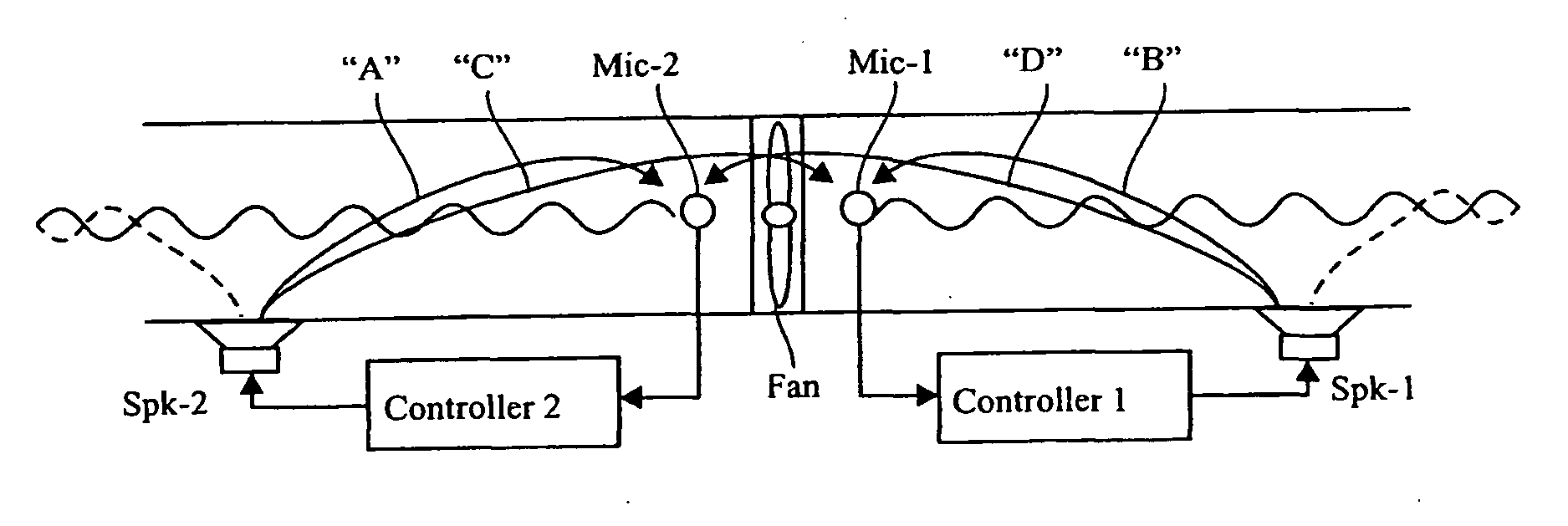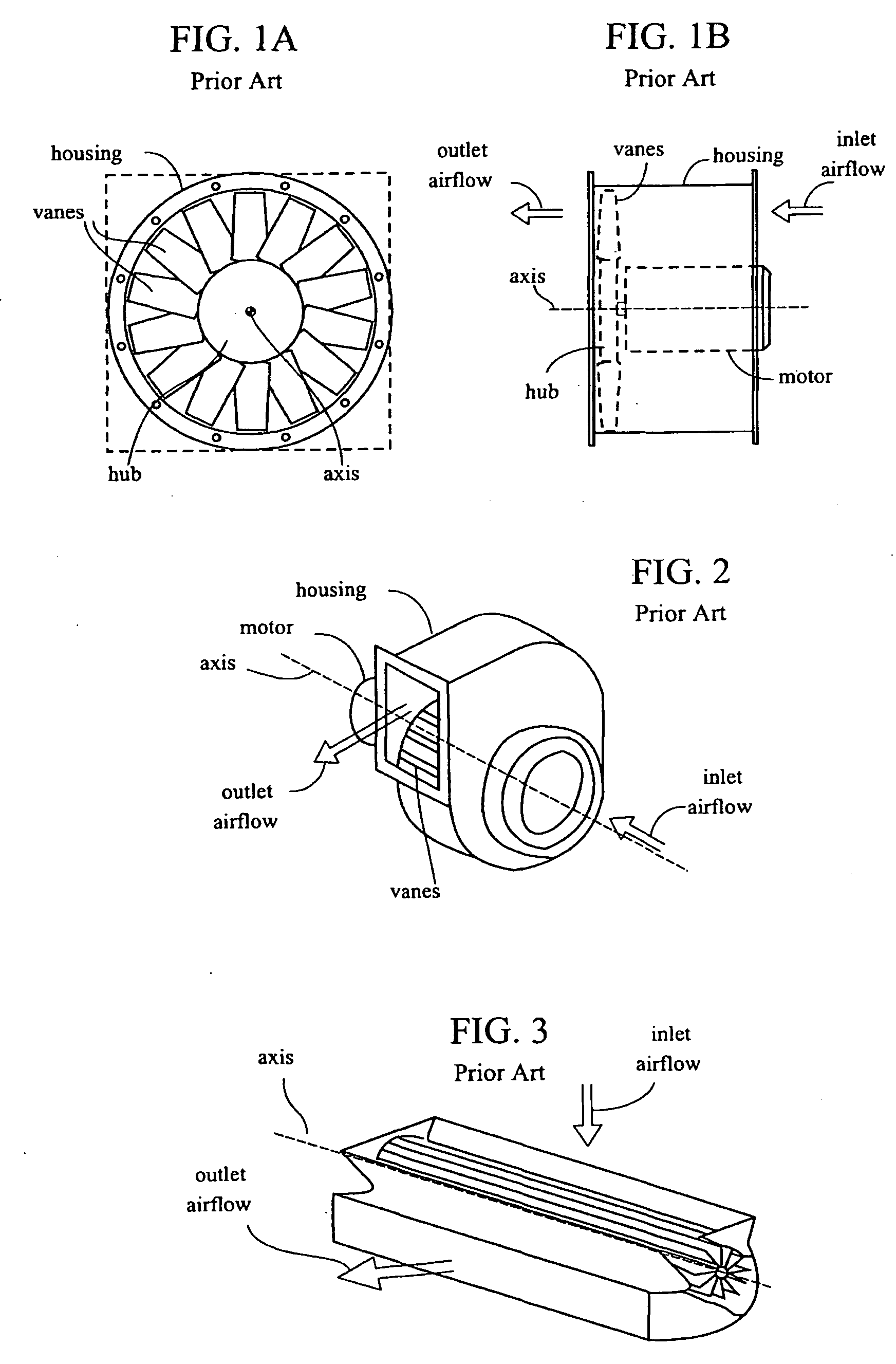Quiet fan incorporating active noise control (ANC)
- Summary
- Abstract
- Description
- Claims
- Application Information
AI Technical Summary
Benefits of technology
Problems solved by technology
Method used
Image
Examples
an embodiment
of a Quiet Fan
[0206]While implementing ANC systems to any kind of fan, whether to both inlet (intake) and outlet (outtake) or to only one of the openings, a “quiet fan” to produce air is achieved. This quiet fan produces low level of noise compared to any, other device based on fan, which produces the same capacity of airflow. The quiet fan may be comprised in any mechanical system which requires airflow induction such as: computers, air conditioners, machines, and more.
[0207]FIG. 11 illustrates that an ANC system may be implemented to both sides of a fan, forming a dual active noise control system. See also FIG. 9. In FIG. 11, the overall airflow is represented, from inlet, through the inlet duct, through the fan, and through the outlet duct.
[0208]In FIG. 9, a microphone (Mic-1) is shown in the inlet duct, and a microphone (Mic-2) is shown in the outlet duct. Each microphone may be located on the central axis of the duct an appropriate distance (such as 3 cm) from the center of the...
PUM
| Property | Measurement | Unit |
|---|---|---|
| Sound absorption | aaaaa | aaaaa |
| Noise | aaaaa | aaaaa |
Abstract
Description
Claims
Application Information
 Login to View More
Login to View More - R&D
- Intellectual Property
- Life Sciences
- Materials
- Tech Scout
- Unparalleled Data Quality
- Higher Quality Content
- 60% Fewer Hallucinations
Browse by: Latest US Patents, China's latest patents, Technical Efficacy Thesaurus, Application Domain, Technology Topic, Popular Technical Reports.
© 2025 PatSnap. All rights reserved.Legal|Privacy policy|Modern Slavery Act Transparency Statement|Sitemap|About US| Contact US: help@patsnap.com



